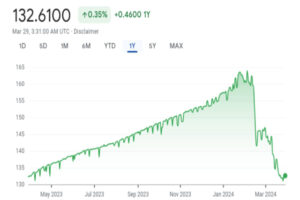Investing in REITs is a convenient way of investing in real estate without having to own property. A REIT (Real Estate Investment Trust) is a regulated collective investment scheme that focuses on investing in real estate. It pools money from several investors and invests in a portfolio of real estate investments. REITs employ professional property management practices to ensure maximum returns to investors.
There are two main types of REITs. The D-REIT (Development REIT), and the I-REIT (Income REIT). In D-REITs, investors’ funds are invested in the development of real estate projects. Investors make money when the real estate projects developed by the D-REIT are sold at a profit. A D-REIT can also be designed to convert to an I-REIT upon completion of the development of real estate projects it is involved in.
In I-REITs, investors’ funds are invested in rental properties for income. Rental income and other income related to the property owned by an I-REIT are distributed periodically to investors in the form of dividends.
The distribution of income is guaranteed, and the timing of the distribution is certain. Half-yearly or annual distributions can apply. I-REIT investment guidelines require high levels of distribution of income to investors. It is common for this level to be higher than 80% of the after-tax income.
REITs invest in a wide range of real estate properties such as office blocks, residential apartments, warehouses, shopping malls, medical facilities, data centers, cell towers, hotels, and resorts.
Investing in REITs is done by buying units in REITs. The units work like shares in a company and can be listed and traded on stock exchanges just like shares. Listing introduces the potential of capital gains or losses to investors. If the unit price rises past the purchase price, investors benefit from capital gains, but if the unit price falls below the purchase price, investors suffer capital losses.
REITs facilitate the fractional ownership of real estate. Investors who don’t have the required sum of money to invest in real estate but are seeking exposure to real estate can purchase the units that their money can afford and still get exposure to real estate.
REITs also provide the much-needed diversification from the usual stocks, bonds, and commodities. The double value proposition where the units appreciate in value, and income is distributed regularly is an attribute that cushions and rewards investors in periods of general economic decline. I-REITs also complement fixed-income investments by providing regular income.
The straightforward nature of REIT investments makes it easy for investors to understand the actual assets, costs, and returns of their investments. The capital deployed to a REIT is protected by the real estate properties the REIT has invested in.
REIT investors often benefit from low taxation of their investments. The REIT concept is still at the developmental and promotional stage in emerging economies, and most governments deliberately impose minimal taxation on REITs to encourage uptake by investors.
The ease of buying and selling REIT units from a stock exchange introduces liquidity to otherwise illiquid real estate investments. REITs also give real estate investors access to professional property investment, development, and management teams.
Here is a close look at an actual REIT.
1. Acorn Student Accommodation Income REIT (ASA I-REIT)
The objective of the fund is to provide investors with an opportunity to own a piece of the profitable Qwetu and Qejani student residences portfolio and benefit from sustained returns and capital gains in a regulated and transparent environment.
| Fund Inception | February 2021 |
| REIT Manager | Acorn Investment Management Ltd |
| Regulator | Capital Markets Authority (Kenya) |
| Trustee | Co-operative Bank of Kenya |
| Auditors | Deloitte |
| Valuers | Knight Frank |
| Registrars | CDSC |
| Base Currency | KES |
| Fund Size | KES 3.7 billion |
| Price per Unit | KES 20.80 |
| Minimum Investment | KES 5,000,000 |
| Minimum Investment through Vuka | KES 4,000 |
Vuka is an exclusive invite-only investment club that allows individual investors to own units of the ASA I-REIT through a digital platform. To invest in the ASA I-REIT, an individual investor can choose any of the following five membership categories.
| Category | Upper Limit (KES) | Joining Fee (KES) | Annual Fee (KES) | |
| 1 | Silver | 100,000 | 499 | 499 |
| 2 | Gold | 200,000 | 1,499 | 799 |
| 3 | Platinum | 500,000 | 2,499 | 1,499 |
| 4 | Platinum + | 1,000,000 | 3,499 | 2,499 |
| 5 | Diamond | 2,000,000 | 4,499 | 3,499 |
After selecting a category that represents the amount you want to invest, you can pay the corresponding upper limit amount upfront or in installments at your own pace. The minimum installment amount is KES 4,000.
Other features of this REIT include:
- It is suitable for medium to long-term investments i.e more than two years
- Return is paid in form of dividends every 6 months
- Investors can access funds within 5 – 10 working days
- Average return of 8.8% pa
- There is a 5% withholding tax on dividends
Payments to the ASA I-REIT can easily be made by mpesa or bank transfers. You can invest in the ASA I-REIT with the help of your financial adviser or you can invest through Vuka using this link.
2. Acorn Student Accommodation Development REIT (ASA D-REIT)
The objective of the fund is to seek capital appreciation by developing the Qwetu brand of student accommodation residences managed by the ASA I-REIT. The fund can be accessed by blending investments with the ASA I-REIT. Investments into the fund are split 30% into the ASA D-REIT and 70% into the ASA I-REIT.
| Fund Inception | February 2021 |
| REIT Manager | Acorn Investment Management Ltd |
| Regulator | Capital Markets Authority (Kenya) |
| Trustee | Co-operative Bank of Kenya |
| Auditors | Deloitte |
| Valuers | Knight Frank |
| Registrars | CDSC |
| Base Currency | KES |
| Fund Size | KES 5.5 billion |
| Price per Unit | KES 23.87 |
| Minimum Investment | KES 20,000,000 |
Other features of this REIT include:
- It is suitable for investors who can lock in funds for 5 – 10 years
- Investors can access funds in 10 days
- It offers blended returns; Investments into the ASA D-REIT are done alongside investments into the ASA I-REIT.
- Target returns are 9 – 18% per year.
You can invest in the ASA D-REIT with the help of your financial adviser






